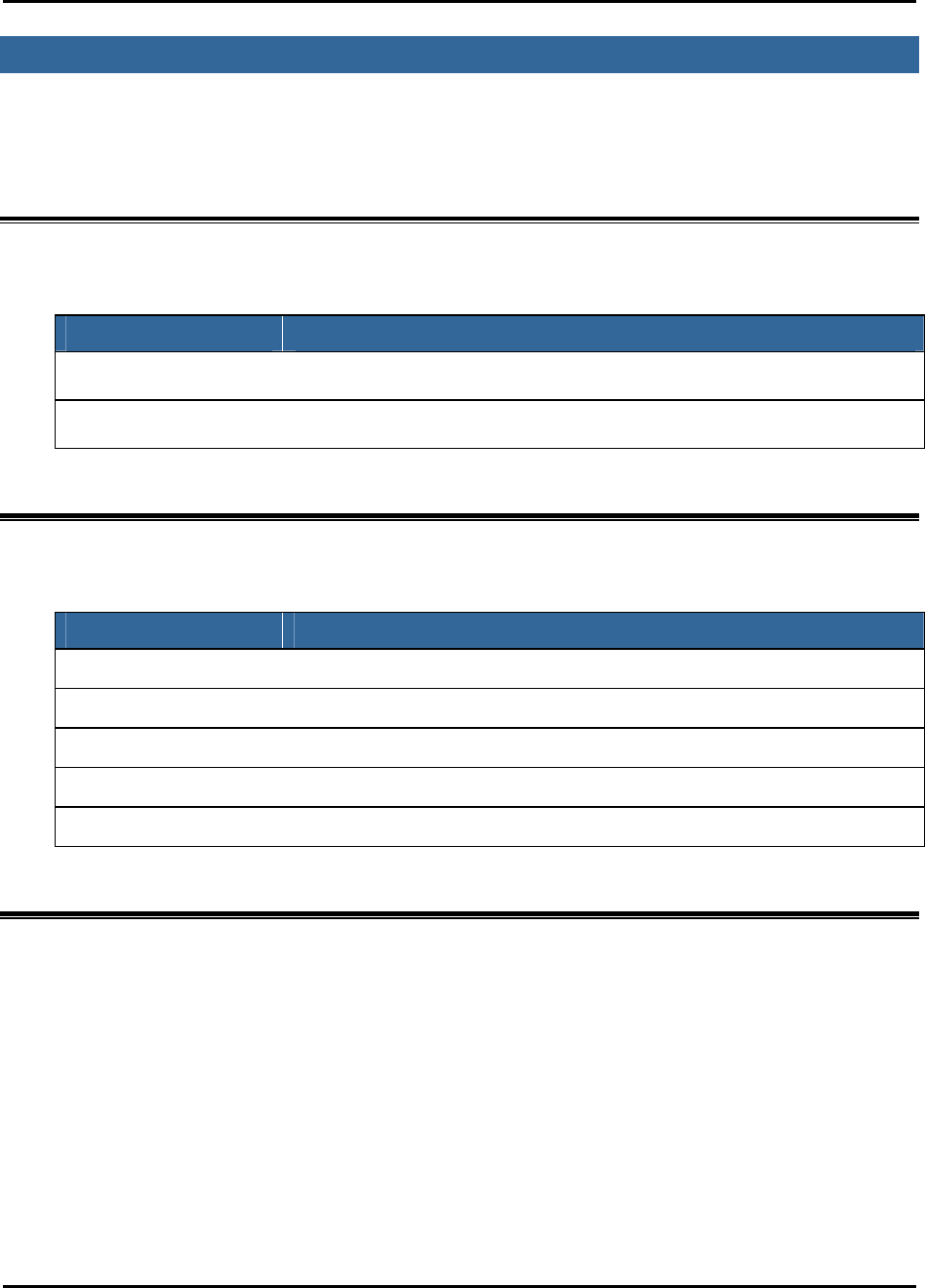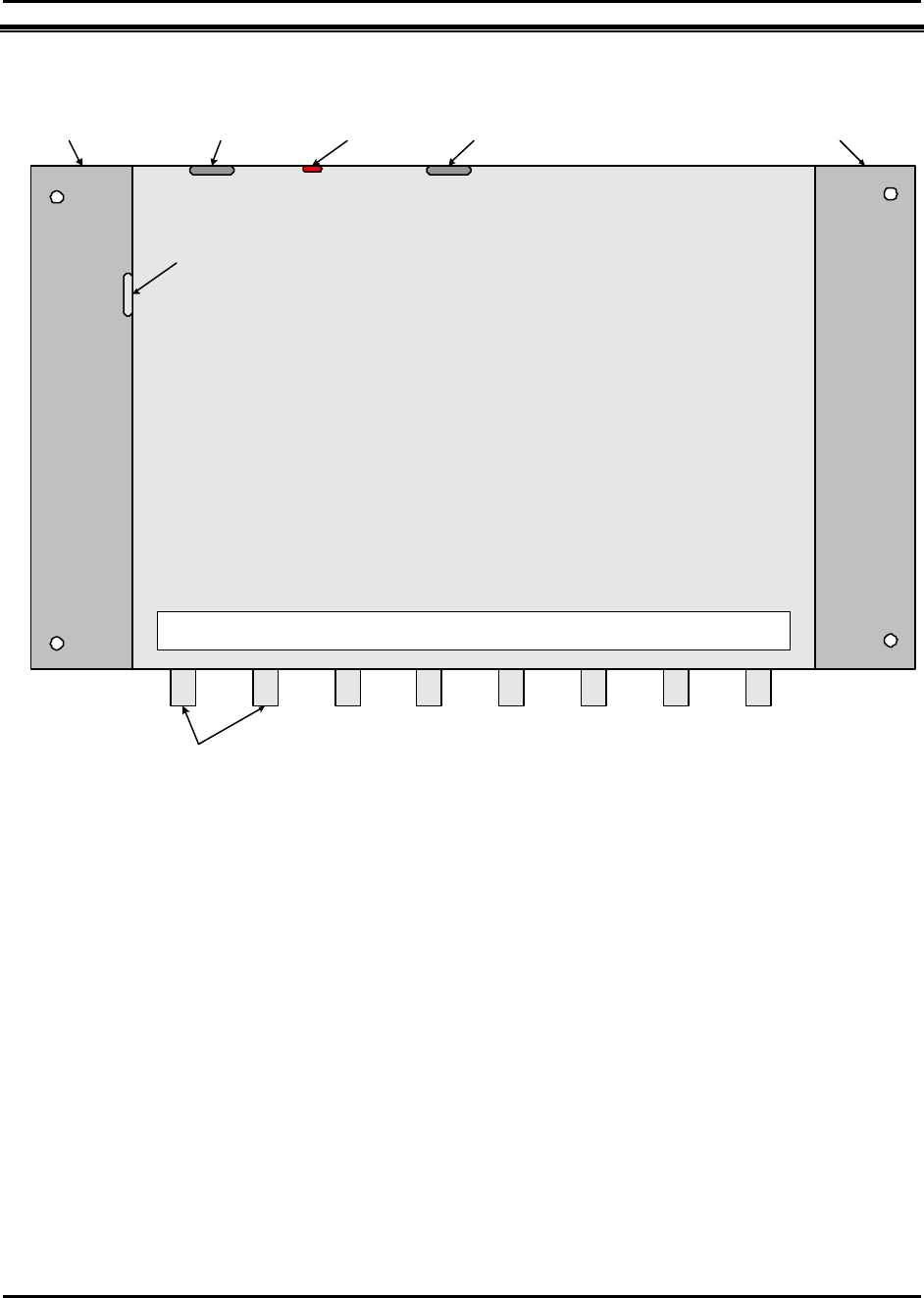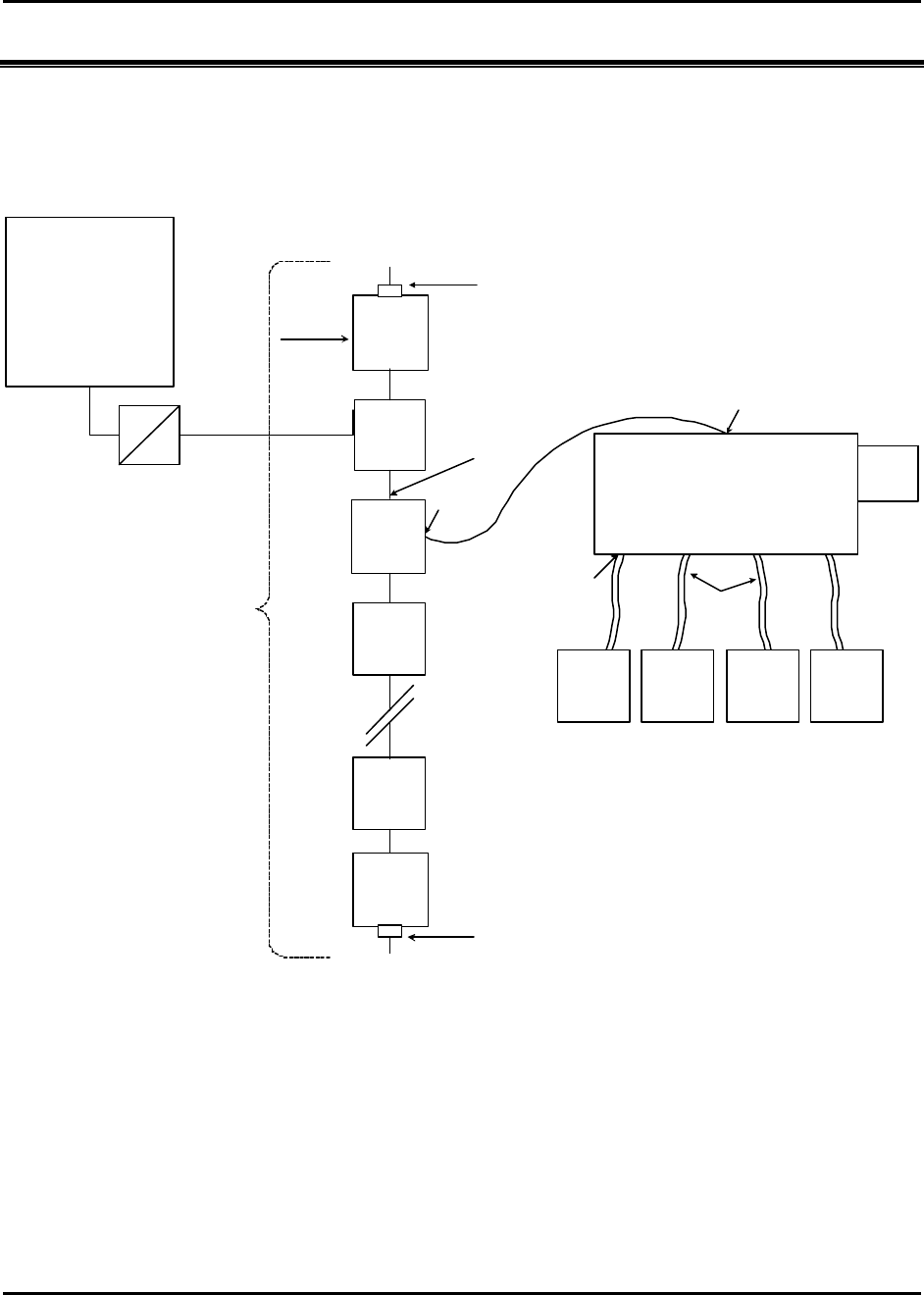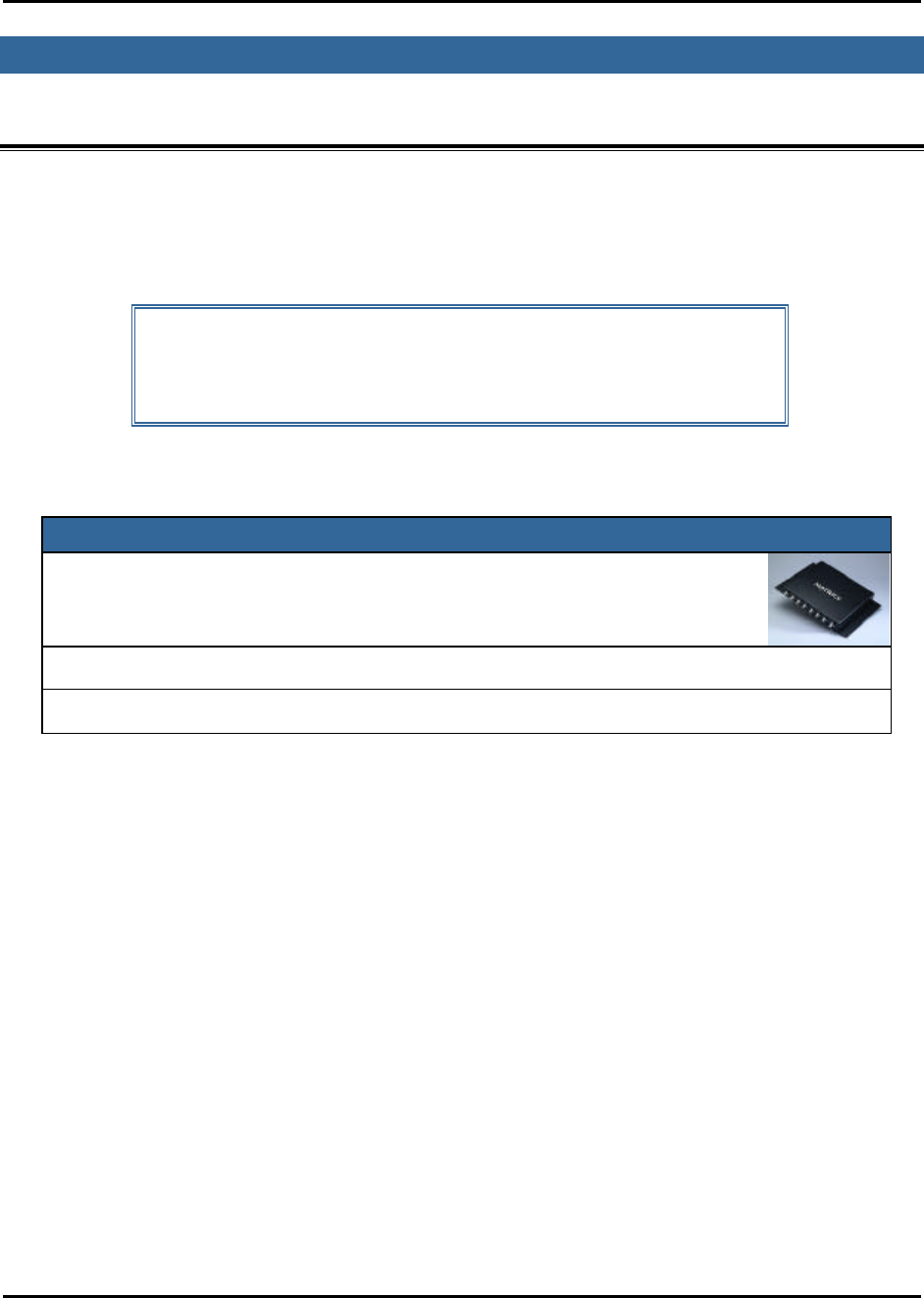Symbol Technologies RDR001 Frequency Hopping Spread Spectrum Transmitter User Manual Stationary Reader User s Manual
Symbol Technologies, Inc Frequency Hopping Spread Spectrum Transmitter Stationary Reader User s Manual
Users Manual

Stationary Reader
User’s Manual
Published: April 16, 2002
Document Control Number: MNI01H001
Matrics, Inc.
8850 Stanford Boulevard
Suite 3000
Columbia, MD 21045
Tel: 410.872.0300
Fax: 410.872.0700
http://www.matrics.com

ii Stationary Reader User’s Manual 2001-2002 Matrics, Inc.
Notices
Copyright 2001-2002 Matrics, Inc. All rights reserved.
This document is protected by copyright with all rights reserved. No part of the document may be reproduced or
transmitted by any means or in any form without prior consent in writing from Matrics, Inc.
Trademarks
Matrics is a trademark of Matrics, Inc. All other product names or logos mentioned herein are used for
identification purposes only, and are the trademarks of their respective owners.
Statement of Rights
IMPORTANT – READ CAREFULLY: Matrics products incorporate technology that is protected by U.S. patent
and other intellectual property (IP) rights owned by Matrics, Inc, and other rights owners. Use of these products
constitutes your legal agreement to honor Matrics’ IP rights as protected by applicable laws. Reverse
engineering, decompiling, or disassembly of Matrics products is strictly prohibited. Violators will be prosecuted.

Stationary Reader User’s Manual 2001-2002 Matrics, Inc. iii
Contents
SECTION 1. INTRODUCTION ..................................................................................................1
Document Conventions ....................................................................................................1
Acronyms and Abbreviations............................................................................................1
Disclaimer........................................................................................................................1
SECTION 2. SYSTEM DESCRIPTION........................................................................................2
Product Description.........................................................................................................2
SECTION 3. SPECIFICATIONS AND DIAGRAMS ........................................................................3
Reader Specification........................................................................................................3
LEDs and Connectors......................................................................................................3
Reader Diagram...............................................................................................................4
Connections Diagram.......................................................................................................5
SECTION 4. GETTING STARTED..............................................................................................6
What’s Included?.............................................................................................................6
SECTION 5. INSTALLATION....................................................................................................7
Mount the Reader............................................................................................................7
Connect Antenna(s) to the Reader....................................................................................8
Connect the Reader to a Host Computer..........................................................................8
Power On (and Off) the Reader .......................................................................................8
Verify the Reader Installation............................................................................................9
Reader On?.................................................................................................................9
Test Read Range..........................................................................................................9
SECTION 6. CAUTIONS, NOTES , AND APPROVALS ...............................................................10
SECTION 7. WARRANTIES AND RETURNS .............................................................................11
Limited Warranty...........................................................................................................11
Return Material Authorization (RMA).............................................................................11
SECTION 8. TROUBLESHOOTING..........................................................................................12
SECTION 9. CONTACT US....................................................................................................13

iv Stationary Reader User’s Manual 2001-2002 Matrics, Inc.
This page left intentionally blank.

Stationary Reader User’s Manual 2001-2002 Matrics, Inc. 1
Section 1. Introduction
This Stationary Reader User’s Manual, designed for the Matrics RFID System end-user, describes the
Stationary Reader (PN: RDR-001) and how to install it.
Document Conventions
The following conventions are used in this User’s Manual:
CONVENTION DESCRIPTION
1. Numbered list Provides step-by-step procedures for performing an action
• Bulleted list Provides grouped information, not procedural steps
Acronyms and Abbreviations
The following acronyms and abbreviations are used in this User’s Manual:
ACRONYM DEFINITION
IC Integrated Circuit
MVM Matrics Visibility Manager
OOK On Off Keyed
RFID Radio Frequency Identification
TBD To Be Determined
Disclaimer
While Matrics has committed its best efforts to providing accurate information and timely updates to this
User’s Manual, we assume no responsibility for any inaccuracies that may be contained herein, and we
reserve the right to make changes to this User’s Manual without notice.

2 Stationary Reader User’s Manual 2001-2002 Matrics, Inc.
Section 2. System Description
Matrics develops and markets Radio Frequency Identification (RFID) solutions that are effective and
affordable by offering a combination of low cost, long read range, and a very high read rate unmatched
by other RFID systems. A Matrics RFID System gives you real-time, end-to-end visibility of products
and assets in your factory, distribution center, retail outlet, or other facility. A typical Matrics RFID
system consists of three main components:
• Silicon-based RFID tags that can be attached to containers, pallets, boxes, trays, etc., to create a
“people-free” wireless environment for tracking objects as they travel through the supply chain,
• Reader network components (readers, antennas, cables, connectors, power supplies, etc.) that
power and communicate with the tags, and
• The Matrics Visibility Manager (MVM) software that runs on your choice of host computer and
collects tag data automatically.
Product Description
The Matrics Stationary Reader (PN: RDR-001) is an industrial strength fixed Reader targeted to indoor
applications, such as warehouses. The Reader offers superior and robust read range capabilities, anti-
collision features, and very high data read rates unmatched by other systems. It can be easily mounted in
areas of ingress and egress where large numbers of tagged objects are inbound or outbound in a logistics
process. It is packaged ready to be interfaced to your host computer, and can easily be programmed to
perform specific tasks.
The Reader provides all of the RF and control functions required to power and communicate with
Matrics passive RFID tags (PN: SDR-001 and DDS-001.) It sends digital data to the tag (through one
antenna at any given time) on a pulse width modulated On Off Keyed (OOK) transmitter signal,
demodulates the identification signal received from the tag, and then sends the data to your host
computer.
The Matrics Reader network is structured to allow for flexibility in system configurations and in the
arrangement of read points to optimize coverage at a low overall cost. In its maximum configuration, a
single Reader can support a total of thirty-two (32) lower performance antennas [with eight (8) lower
performance antennas attached to each of up to four (4) multiplexers attached to a Reader], or four (4)
high performance antennas attached directly to a Reader. Any combination (up to the maximum) of high
performance antennas (directly attached to the Reader) and lower performance antennas (attached to the
Reader via multiplexers) can be implemented.
The system also employs a unique, patented reader-driven interrogation protocol that allows up to two
hundred (200) tags to be read each second. This powerful read rate supplies the muscle to overcome
interference in noisy environments, and to guarantee acceptable read rates at each read point when large
numbers of antennas are multiplexed together.
Readers can be powered either locally or through the network cable in the event there is not a local power
source near by, and to minimize overall network infrastructure costs.

Stationary Reader User’s Manual 2001-2002 Matrics, Inc. 3
Section 3. Specifications and Diagrams
Reader Specification
CHARACTERISTIC DESCRIPTION
Name/Part Number Stationary Reader (PN: RDR-001)
Operating Frequency UHF band, 902-928 MHz, frequency hopping
System Architecture Point-to-multipoint reader network
Dimensions 12.5” wide (includes mounting plate) x 8.75” high (includes connectors)
x 1.5” deep
Simultaneous Reading Capability Up to 200 tags per second
Temperature Operational: 0° to +50° C (+32° to +122° F)
Storage: -20° to +70° C (-4° to +158° F)
Communications Interface RS485, 232400 bps, no flow control, no parity, 8 data bits, 1 stop bit
Input/Output 4 dual coax antenna mini-UHF connectors, 1 RJ45 host comm., 1 2.5 mm
power, 1 RJ14 multiplexer
Power Supply +24 VDC, 1.2A (unregulated)
Power Consumption 30 watts operational, 1 watt standby
RJ45 Pin Assignments
(host communications)
Pin 1: Tx+ Data
Pin 2: Tx- Data
Pin 3: Power Return and Ground
Pin 4: +24VDC
Pin 5: +24VDC
Pin 6: Power Return and Ground
Pin 7: Rx- Data
Pin 8: Rx+ Data
Multiplexer connection
Pin 1: Clock+
Pin 2: Clock-
Pin 3: +12V
Pin 4: +12V
Pin 5: Tx- Data
Pin 6: Tx+ Data
LEDs and Connectors
ITEM DESCRIPTION
Power/Activity LED LED is red when the Reader is powered on and receiving power. The
light blinks when commands are correctly received from the host PC.
RS485 / Bus Power Connector Connect to host PC and bus power.
RJ14 Connector For future use.
+24VDC 1.2A Connector
(Unit Power)
The power supply should be plugged into a wall outlet and into the DC
power connector.
Mini-UHF Antenna Connectors Connect to external antennas.

4 Stationary Reader User’s Manual 2001-2002 Matrics, Inc.
Reader Diagram
Stationary Reader
Part No. RDR-001
Multiplexer
Connector
Matrics, Inc. 04/10/02
Tx 4Tx3Tx2Tx1Rx4Rx3Rx2Rx1
485 / Bus Power
Connector Power/Activity
LED
+24VDC
1.2A Connector
(Unit Power)
Mounting
Plate
Mounting
Plate
12.5" wide (includes mounting plate)
x 8.75" high (includes connectors)
Antenna Connectors

Stationary Reader User’s Manual 2001-2002 Matrics, Inc. 5
Connections Diagram
unspec.
485
convertor
Host/PC
Stationary Reader
RDR-001
General
Purpose
Antenna
General
Purpose
Antenna
General
Purpose
Antenna
General
Purpose
Antenna
RG-142B
(25' max.)
123 4
Local
Power
(optional)
Wiring
Block
5' Patch
Wiring
Block
Belden #88757
or equivalent
(22 ga. CAT3)
RJ45
RJ45 CAT5
std patch
5' max.
mini
UHF
Wiring
Block
Bus Power
Wiring
Block
Wiring
Block Reader 20 (max. for bus power)
Reader 32 (max. for local power)
Wiring
Block
Std 485 Bus
Terminator
Rx ± ] 120Ω
Tx ± ] 120Ω
250'
max.
bus
powered
-or-
500'
max.
locally
powered
Functional System Connections
Matrics, Inc. 04/10/02
Reader 1
Std 485 Bus
Terminator
Rx ± ] 120Ω
Tx ± ] 120Ω

6 Stationary Reader User’s Manual 2001-2002 Matrics, Inc.
Section 4. Getting Started
What’s Included?
Before you proceed with your Reader installation, check that you have all of the items you need. Contact
Matrics (refer to the “Contact Us” section in this User’s Manual) if any of the parts listed in this section
are missing from your Reader package, or any of the items you received are damaged.
NOTE: You should use ONLY those parts provided in your Reader package
or specifically recommended by Matrics. Do not substitute any other
cables, etc., since doing so may degrade your system’s performance,
damage your Reader, and void your warranty.
In addition to this User’s Manual, you should have received the following items in your package:
In addition, you will need:
• Matrics Reader Networking Kit (PN: NKT-001) to connect the Reader to your host computer,
• A power supply for your Reader (such as PN: PWR-001, available from Matrics),
• (4) screws for mounting the Reader, and
• several wire ties to secure any extra lengths of cable.
PART NUMBER (PN) QTY. DESCRIPTION
RDR-001 1 Stationary Reader
1 CAT3 cable termination block (“wiring block”)
1 3-foot data cable

Stationary Reader User’s Manual 2001-2002 Matrics, Inc. 7
Section 5. Installation
Follow the steps listed below (and detailed in the following sections) to install, configure, and test your
Reader:
1. Mount the Reader in a location chosen for optimal surveillance.
2. Connect antenna(s) to the Reader.
3. Connect the Reader to your host computer.
4. Power on the Reader.
5. Verify that your Reader installation is operational.
Mount the Reader
Before mounting the Reader, you must select a location for it. For best results, consider the following
when determining the optimal placement for your Reader:
CAUTION: If the Reader is not installed properly, it could be damaged and
your system performance diminished.
þ
Mount the Reader indoors, in operating range, and out of direct sunlight, high moisture,
or extreme temperatures.
þ
Mount the Reader in an area free from electromagnetic interference. Such sources of
interference may include: generators, pumps, converters, non-interruptible power
supplies, AC switching relays, light dimmers, computer CRT terminals, etc.
þ
Mount the Reader within 15 feet of your antennas (antenna connector cables from
Matrics are 15-feet long.)
þ
Make sure the local power supply cord, when attached to the Reader, can reach the
power source outlet.
þ
Do not mount the Reader within 12 inches of a computer CRT terminal.
þ
Make sure that you will be mounting the Reader onto a permanent fixture (wall or shelf)
where it won’t get disturbed, bumped, or damaged. Keep in mind that you will need five
(5) inches of clearance on all sides of the Reader.

8 Stationary Reader User’s Manual 2001-2002 Matrics, Inc.
To mount the Reader:
1. Position the Reader (PN: RDR-001) at the desired mounting position on the wall or shelf. Make sure
that there are five (5) inches of clearance on all sides of the Reader.
2. Using the pre-drilled holes at the corners of the Reader to guide you, drill four holes for mounting the
reader.
3. Securely affix the Reader to the wall of shelf using the four screws that you provided.
Connect Antenna(s) to the Reader
Attach your antenna(s) to the Reader in sequential order (first connecting Antenna 1 to Reader connectors
Tx1 and Rx1, then Antenna 2 to Reader connectors Tx2 and Rx2, Antenna 3 to the Tx3/Rx3 connectors
next, and Antenna 4 to the Tx4/Rx4 connectors last.)
1. Attach the large ends of your antenna connector cables to the large connectors on the antenna.
2. Attach the small ends of the cables to the corresponding connectors on the Reader (Antenna 1 to
Reader connectors Tx1 and Rx1, etc.)
3. Secure your cables using wire ties (do not bend the cables.)
WARNING: Do not disconnect antenna cables when actively reading tags
(if the LED is lit on the Reader, don’t disconnect the antenna cables.) You
could severely damage your Reader. Make sure that you unplug the power
supply to power off the system first before disconnecting cables.
Connect the Reader to a Host Computer
The steps you must follow to interface the Reader with your system depend upon the software package
you choose to use. Contact Matrics for more information.
Regardless of the software you use to do it, you must change your Readers’ factory-assigned xFF
address to a unique address for communicating with your host computer.
Power On (and Off) the Reader
1. Connect a 24V DC power supply (such as PN: PWR-001, available from Matrics) to the Reader’s
Unit Power port.
2. To power on the system, insert the plug end of the power supply into a 24V (±1V) / 40W power
outlet. The Power/Activity LED on the Reader should light red, indicating that the Reader is powered
on and the system is live.

Stationary Reader User’s Manual 2001-2002 Matrics, Inc. 9
3. To power off the Reader, unplug the power supply from the power outlet. The Power/Activity LED
on the Reader should turn off, indicating that the Reader is powered off and the system is not
operational.
Verify the Reader Installation
Reader On?
After you have installed the Reader as described in this User’s Manual, test that the Reader is on by
following the instructions provided above in the “Power on (and Off) the Reader” section.
To verify that the Reader is operational, power it on by plugging the power supply (attached to the
Reader) into the appropriate power outlet. The Power/Activity LED on the Reader should light red,
indicating that the Reader is powered on and the system is operational.
Test Read Range
After you have installed the Reader as described in this User’s Manual, test the read distance of your
hardware configuration to verify that it meets your needs.
1. To measure the read distance between the Reader and a tag, hold a tag in front of you (with the tag
face parallel to the Reader face.)
2. Walk slowly toward the Reader until the Reader responds with a flash of the Power/Activity LED.
This indicates that the Reader has detected and read the tag.
NOTE: For purposes of this test, we recommend that you do not hold the
tag at an angle, or wave the tag in front of the Reader, as that may cause
the measured read distance to vary.
3. In order to read the same tag again, first remove the tag completely from the Reader’s read field, and
then perform Step 2 again.

10 Stationary Reader User’s Manual 2001-2002 Matrics, Inc.
Section 6. Cautions, Notes, and Approvals
Matrics products are approved (or approval pending) by the appropriate regulatory agencies:
• Federal Communications Commission (FCC), Part 15
• Underwriter Laboratory, UL 294
Note: This equipment has been tested and found to comply with the limits for a Class A digital
device, pursuant to Part 15 of the FCC Rules. These limits are designed to provide reasonable
protection against harmful interference when the equipment is operated in a commercial environment.
This equipment generates, uses, and can radiate radio frequency energy and, if not installed and used
in accordance with the User’s Manual, may cause harmful interference to radio communications.
Operation of this equipment in a residential area is likely to cause harmful interference in which case
the user will be required to correct the interference at his or her own expense.
CAUTION: Changes or modifications not expressly approved by the
party responsible for compliance could void the user’s authority to
operate the equipment.
Information to the User: This device complies with Part 15 of the FCC Rules. Operation is subject
to the following two conditions: (1) This device may not cause harmful interference, and (2) This
device must accept any interference received, including interference that may cause undesired
operation.
WARNING: This device must be installed in a location that is not
accessible to the general public. Install the device so that the antenna is at
least 25 centimeters from unsuspecting personnel. Failure to install this
device as described will result in a failure to comply with FCC rules for
RF exposure and is discouraged.
Disclaimer: Operation of any radio transmitting equipment, including this product, may interfere
with the functionality of inadequately protected medical devices. Consult a physician or the
manufacturer of the medical device if you have any questions. Other electronic equipment may also
be subject to interference.

Stationary Reader User’s Manual 2001-2002 Matrics, Inc. 11
Section 7. Warranties and Returns
Limited Warranty
Matrics warrants its products to the original purchaser to be free of defects in workmanship and material
for a period of ninety (90) days from date of receipt. Matrics’ sole and complete responsibility under this
warranty is expressly limited to repair or replacement of the defective product.
Replacement products may be new or reconditioned. All products that are replaced shall become the
property of Matrics The warranty for replacement products is the same as the equivalent newly
purchased product.
Any tampering or modification to the product, or subjecting of product to abnormal electrical,
mechanical, or environmental abuse will void this product warranty.
Return Material Authorization (RMA)
You must obtain a return material authorization (RMA) number from Matrics Customer Service (refer to
the “Contact Us” section in this User’s Manual) before you return any parts for repair or replacement.
This RMA number must be clearly marked on the outside of the returned package, and referenced in any
correspondence contained within the package.
NOTE: If you return parts to Matrics without a RMA number, they will be
returned to you at your own expense.
Before you call Matrics to receive a RMA number, make sure that you have the following information
available for the Customer Service technician:
þ
A description of the returning item.
þ
Serial numbers (if applicable.)
þ
A description of the fault or failure. (Example: The antenna cable appears to have been
pulled out of the antenna, and the system is not functioning.)
þ
Fault or Error message (if applicable.)

12 Stationary Reader User’s Manual 2001-2002 Matrics, Inc.
Section 8. Troubleshooting
In the event that you encounter a problem with your system, refer to the following table for possible
solutions:
PROBLEM POSSIBLE CAUSE SOLUTION
The Reader’s
Power/Activity LED
doesn’t light.
The AC outlet may not be
working or may be controlled by
a wall switch.
Plug a different electrical appliance into the outlet
and turn it on. If the appliance doesn’t work, plug
the Reader into a different outlet.
The Reader’s
Power/Activity LED is on
but doesn’t blink.
The Reader isn’t communicating
with the host PC
-or-
The host PC isn’t
communicating with the Reader.
Check that your host PC’s port settings are
configured properly.
Make sure that you used the Utility software to
change the Reader’s factory-assigned xFF
address to a unique address for communicating
with your host PC.
Check to ensure proper network cabling
(including terminators at both ends.)
Verify communications at a fixed 230,400 rate.
Read range has degraded
noticeably.
The environment may not be
free from sources of
electromagnetic interference.
Check that your Reader is installed in a location
free from electromagnetic interference sources
such as: generators, pumps, converters, non-
interruptible power supplies, AC switching
relays, light dimmers, computer CRT terminals,
etc.
Run system cabling away from other data
carrying cables.

Stationary Reader User’s Manual 2001-2002 Matrics, Inc. 13
Section 9. Contact Us
For sales, service, and technical assistance, contact Matrics at:
Tel: 410.872.0300
Monday-Friday 8:30 a.m. – 5:00 p.m. EST
Fax: 410.872.0700
http://www.matrics.com/
Matrics, Inc.
8850 Stanford Boulevard
Suite 3000
Columbia, MD 21045
USA